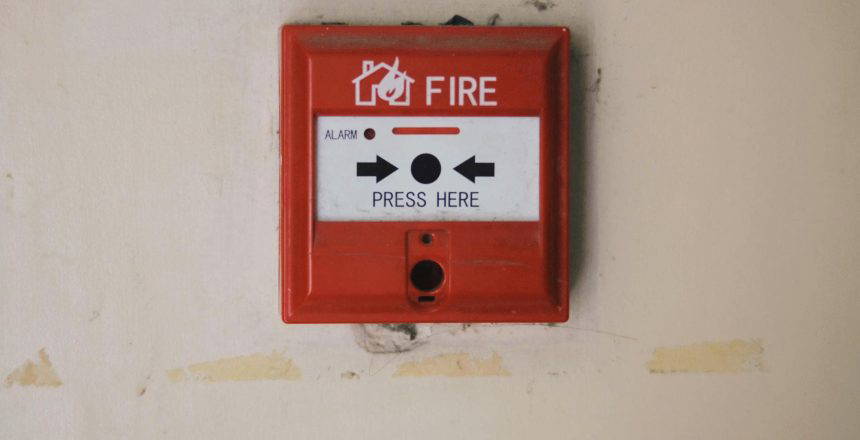Holiday Parks give families and individuals a chance to unwind and enjoy the outdoors away from the hustle and bustle of everyday life. However, there’s a potential threat that could ruin a peaceful vacation: fire. Managing Holiday Parks means assessing fire risk to make sure guests and staff are safe.
In this article, we examine the essentials of Fire Risk Assessments. Whether you’re a park owner, manager, or visitor, knowing these essentials is crucial to keeping everyone safe and having fun.
What are Fire Risk Assessments?
A Fire Risk Assessment is an evaluation of a building to identify fire hazards and assess their risk level. It determines whether existing fire safety measures are adequate and identifies additional measures, as needed, to keep occupants safe.
In the context of Holiday Parks, Fire Risk Assessments factor in things like accommodation units, communal facilities, outdoor recreation areas, and the influx of guests from diverse backgrounds.
These assessments are a proactive approach to safeguarding lives and property. Holiday Park owners and managers can significantly reduce the risk of fire incidents and mitigate their effects if they do happen by identifying potential fire hazards and implementing appropriate control measures.
The importance of Fire Risk Assessments in Holiday Park safety
Holiday Park owners and managers are legally obligated to conduct regular Fire Risk Assessments under the Regulatory Reform (Fire Safety) Order 2005. Failure to comply with these regulations means severe penalties and, more importantly, compromises everyone’s safety.
A fire incident can have devastating consequences for Holiday Parks, disrupting operations, damaging infrastructure, and tarnishing reputation. Holiday Park owners can ensure business continuity by conducting thorough Fire Risk Assessments and implementing effective mitigation strategies.
By demonstrating a commitment to fire safety through comprehensive Fire Risk Assessments, Holiday Park owners give guests and staff peace of mind.
Key components of a Fire Risk Assessment
A thorough Fire Risk Assessment for Holiday Parks consists of several essential components that identify, evaluate, and mitigate fire hazards. Here are the key elements:
- Hazard Identification: The assessment starts with a comprehensive inspection of the park to find potential fire hazards. This includes identifying sources of ignition, such as cooking facilities, electrical appliances, or smoking areas, as well as sources of fuel, such as combustible materials, vegetation, or stored goods.
- Evaluation of Fire Safety Measures: Once hazards are identified, fire safety measures are evaluated for effectiveness. This includes reviewing fire detection and alarm systems, firefighting equipment accessibility, and emergency evacuation procedures.
- Assessment of Fire Escape Routes: Part of the assessment is evaluating the fire escape routes in the park. This includes assessing the accessibility, width, signage, and obstructions in evacuation routes so people can get out quickly and safely.
- Vulnerable Groups and High-Risk Areas: Guests with mobility limitations, young children, elderly guests, and other vulnerable groups are given special consideration in emergency evacuation plans. A closer look at high-risk areas, like kitchens, dining halls, and accommodation units with cooking facilities, is also prioritised.
- Fire Prevention Strategies: Preventing fire incidents is key to the assessment. This may include implementing policies and procedures to prevent fires, maintaining electrical systems, and storing flammable materials safely.
- Emergency Response Planning: Based on the assessment results, a robust emergency response plan is created, outlining roles, responsibilities, and procedures. This includes establishing communication protocols, designating assembly points, and coordinating with emergency services.
- Review and Updates: Fire Risk Assessments need to be reviewed and updated regularly. Holiday Park owners and managers need to establish procedures for reviewing and revising assessments regularly, especially when things change, like occupancy or fire safety regulations.
Best practices for improving fire safety measures
Here are some best practices for improving Holiday Park fire safety:
- Install an adequate fire detection and alarm system. Regularly test and maintain these systems so they’re ready for emergencies.
- Provide adequate firefighting equipment. Equip the holiday park with appropriate firefighting equipment, including fire extinguishers, fire blankets, and hose reels, placed in easily accessible locations.
- Establish clear emergency evacuation procedures. Conduct regular drills to familiarise everyone with emergency procedures and train them to evacuate safely.
- Train staff on fire safety protocols. Make sure staff members know their roles and responsibilities during a fire emergency.
- Maintain clear escape routes. Regularly inspect and maintain escape routes, including stairways, corridors, and exits, for hazards.
Rely on professional Fire Risk Assessments
For Holiday Parks to be safe and secure, Fire Risk Assessments are essential. Holiday Park owners and managers can help create a safe environment for guests and staff by thoroughly identifying and mitigating potential fire hazards.
At LS Fire Solutions Ltd, we understand how important Fire Risk Assessments are. Our professional team in Berkshire conducts thorough assessments tailored to holiday Parks’ unique needs. Whether it’s reviewing and updating existing assessments or conducting new ones due to changes in offices or staffing, we’re dedicated to helping our clients stay ahead of fire risks.
Remember, regular reviewing and updating of Fire Risk Assessments are crucial to staying compliant and safe. Don’t leave it to chance—prioritise fire safety today to protect your Holiday Park and everyone within it.
Take the first step towards a safer future by contacting LS Fire Solutions Ltd today for expert assistance with your Fire Risk Assessment needs.

